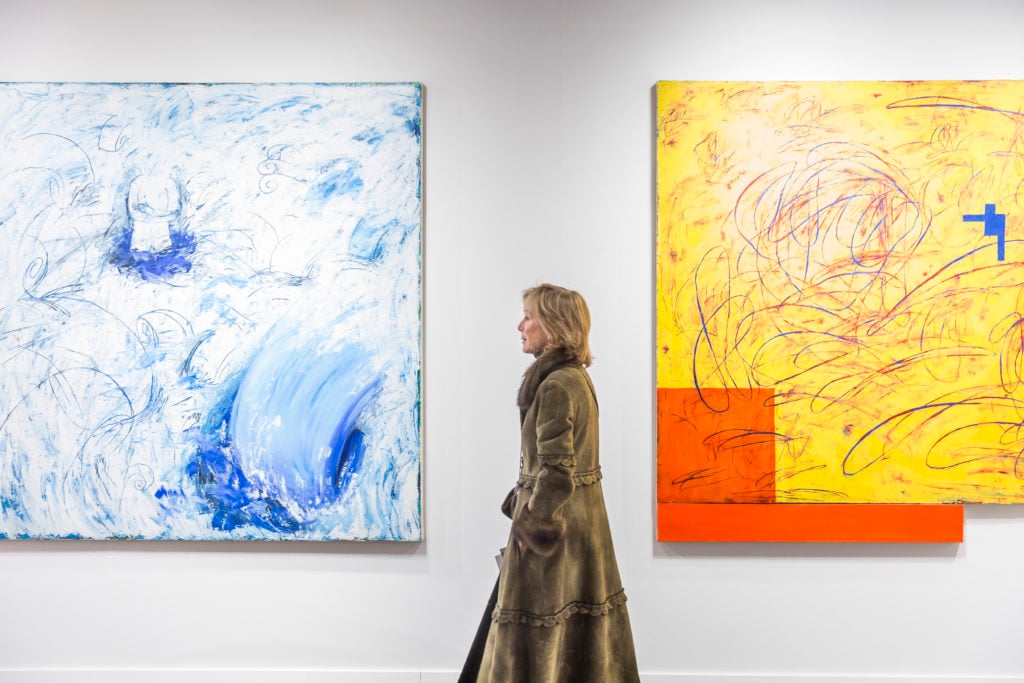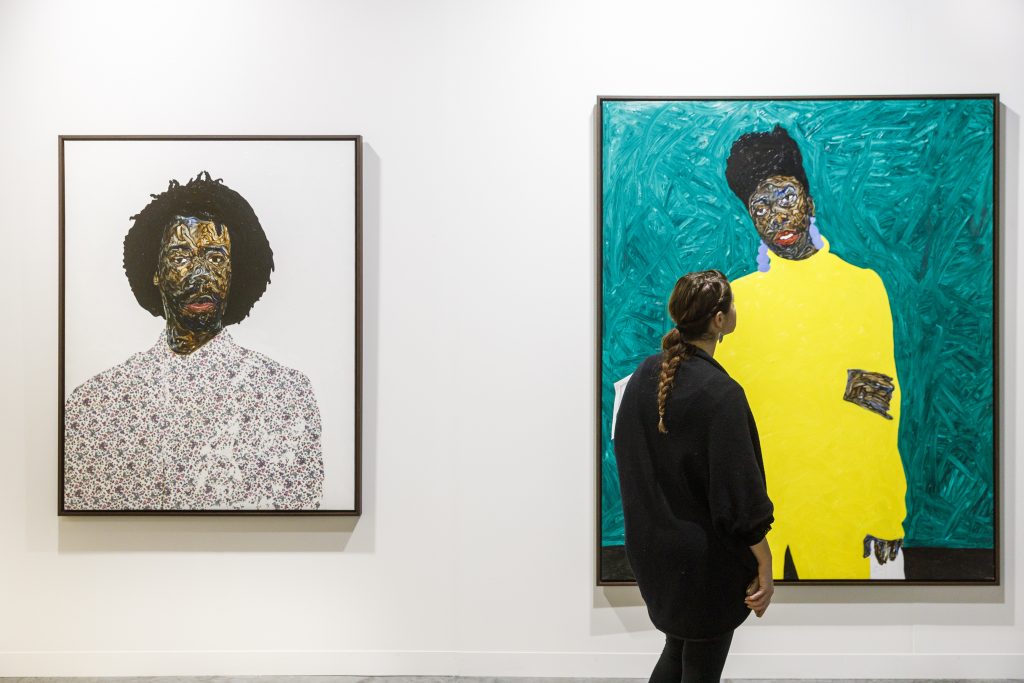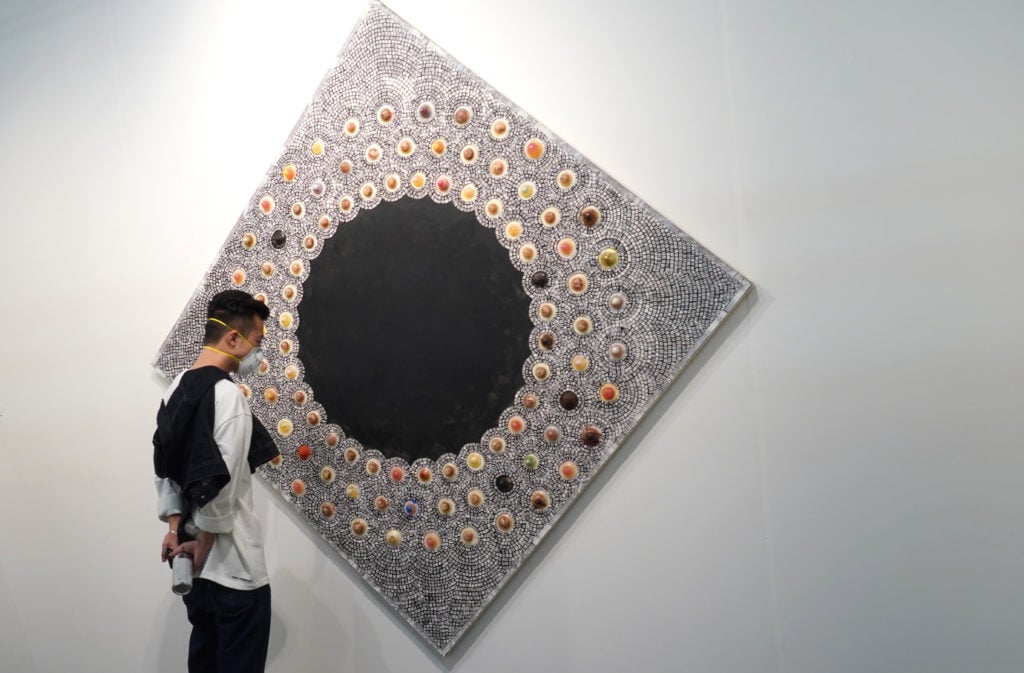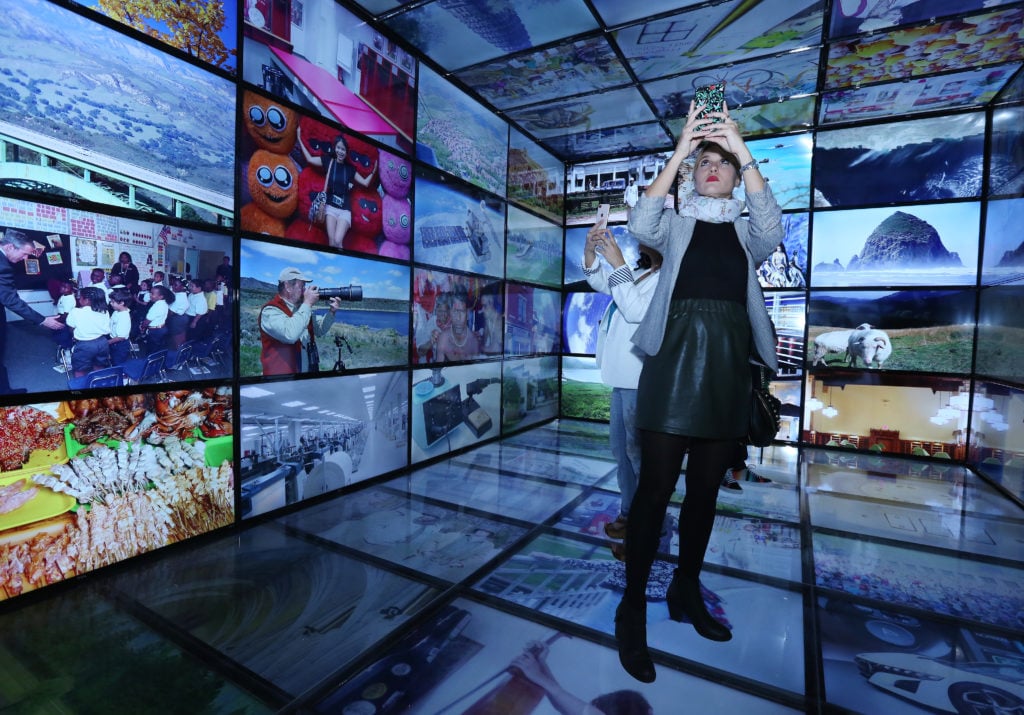Opinion
The Gray Market: Why Silicon Valley Is Not Going to Be Able to Save In-Person Art Fairs in 2021 (and Other Insights)
Our columnist dissects what the newly announced Vaccination Credential Initiative would—and wouldn’t—mean for IRL art fairs.

Our columnist dissects what the newly announced Vaccination Credential Initiative would—and wouldn’t—mean for IRL art fairs.

Every Monday morning, Artnet News brings you The Gray Market. The column decodes important stories from the previous week—and offers unparalleled insight into the inner workings of the art industry in the process.
This week, a reminder that nothing is ever going to be simple this year…
Last Thursday, a coalition of major tech companies and health organizations announced it will work to develop an internationally recognized digital “passport” system that could verify if a person anywhere in the world has received a coronavirus vaccine. Dubbed the Vaccination Credential Initiative (VCI), the project could meaningfully increase the speed and safety with which travel and commerce emerge from the shadow of COVID. Yet it also clarifies the profound challenges facing an art industry forever tethered to larger political and economic forces.
As we all know far too well at this point, nations around the world have so far proven unable or unwilling to agree on common protocols for nearly any element of pandemic living, including the requirements to board international flights and hold mass gatherings. At its worst, the petty disunity smacks of what you’d find in a classroom of tired six-year-olds, except that it’s contributed to two million deaths (and counting) as of last Friday.
Headlined by the likes of Microsoft, Oracle, Salesforce, and the Mayo Clinic, the VCI aims to provide a universal infrastructure to help bridge this void in global public-health policy.
If the project succeeds, everyone vaccinated for COVID-19 could be entered into a shared international database and given a linked certificate (which would take the form of either a digital asset stored in a smartphone wallet or a printed-out QR code). Participating government agencies and businesses worldwide could then scan a person’s inoculation credentials as easily as an airline scans boarding passes at the gate.
The initiative would also help eliminate what amounts to public-health fraud. Here in the US, most people getting COVID vaccinations end up with no more substantial proof than a slip of paper—one that can be forged, copied, or manipulated with little effort. (The same is generally true of test results.) By compiling its credentials in a secure digital registry that can be instantaneously cross-checked, the VCI could prevent bad actors from traveling or attending in-person events using bogus “confirmations” that they are virus-free.
Needless to say, the VCI’s success would be a big win for more than just airlines and federal travel agencies. Thursday’s announcement also called out the project’s possible value to concerts, sporting events, and other ticketed group activities lost to the pandemic.
This inevitably got me thinking about art fairs, whose sales and networking benefits we now know are impossible to fully reproduce online for the same reasons they profile as potential superspreader events.
How close are soon-to-be-vaccinated collectors, exhibitors, and visitors to safely returning to their favorite fairs with the aid of a digital credential from the VCI, then?
As with so much else in this idiosyncratic industry, it’s complicated—and mostly for reasons that have nothing to do with the art market itself.

Art Basel Miami Beach Nova 2019. © Art Basel
It’s safe to assume that high-level fair representatives have spent much of the past year relentlessly dissecting every promising new public-health protocol to surface in the news cycle. So I reached out to Art Basel, Frieze, and the Armory Show late last week to ask if they were either already pursuing anything like the VCI, or if they might consider it before their fairs (hopefully) emerge from cold storage later this year.
Although a Frieze spokesperson declined to comment on specifics, the replies generally confirmed the stance I expect the entire sector would take on the initiative: yes, the VCI could be great for us. But multiple layers need to line up first, and not all of them are in our control.
More specifically, I teased out four takeaways from the statements emailed by Art Basel global director Marc Spiegler and Armory Show director Nicole Berry. While they were sparked by the VCI, I think all but the final takeaway would apply to any COVID-safety protocol still in development. And they offer a vital snapshot of the complex challenge facing art-fair organizers in 2021.
In the opening sentence of her statement, Berry wrote that she and her Armory Show colleagues “continue to watch closely for breakthrough developments (such as the VCI)” that, among other factors, “comply with any and all state and city requirements for our venue and events of our size.” She added in the following sentence that the fair “intend[s] to work closely with state and city agencies to implement optimal safety protocols.”
Her emphasis on this point is all the more striking since her statement did not include a third sentence.
Now, it might seem obvious that government officials hold tremendous power over art fairs, but it can be easy to forget because we’re so used to hearing the art industry portrayed as a lawless free-for-all. In particular, I’m thinking of its ever-popular descriptions as “the Wild West” and “the last unregulated market.”
Don’t get me wrong: those old memes still hold kernels of truth (at least for now). But just as the Armory Show’s move to the Javits Center this September isn’t happening because Berry and her colleagues wagon-trained into the building under cover of darkness and staked claim to the space, they couldn’t just unilaterally decide to implement the VCI by internal vote, either.
Instead, art fairs around the world can only implement the protocols signed off on by government agencies. Which is frustrating, if not perverse, since so many aspects of those same agencies’ pandemic responses have been disastrously bumbling. But that’s the way it is.

A visitor at the Armory Show 2020. (Photo by Selcuk Acar/NurPhoto via Getty Images)
While Spiegler wrote in his statement that Art Basel “would welcome [the VCI’s’] creation and implementation,” he also opened by noting that “an initiative with this scope and of this scale is well beyond our expertise.” It’s a great reminder that even the meatiest fish in our niche industry are minnows in the context of the wider economy.
You can easily see this through the lens of one fundamental business metric: market capitalization. MCH Group, Art Basel’s parent company, had a market cap of $185 million last Saturday. The three most prominent tech companies involved in the VCI—Salesforce, Oracle, and Microsoft—had respective market caps of roughly $182 billion, $195 billion, and $1.6 trillion the same day.
In other words, art-fair organizers don’t have the resources to develop their own version of the VCI or any other significant COVID-safety protocol. The best they can do is to be proactive in adopting bigger projects propelled by much larger backers.
There’s no cause to be all Zen-koan cute about this: If you hold an art fair in a convention center and no one shows up to see it, then yes, it definitely happened… and it failed miserably.
This is why Berry’s statement listed the ability to “improve participant confidence” as the first component of any COVID-safety development that might qualify as a breakthrough for the 2021 Armory Show. Similarly, Spiegler’s response premised Art Basel’s conditional enthusiasm for the VCI on its potential to “make more people feel comfortable in attending live events with a global audience.”
Unless collectors, exhibitors, and other visitors buy into fairs’ health and safety infrastructures, nothing else matters. So whether we’re talking about the VCI or another in-development COVID-protection protocol, massive funding and government approval won’t be enough for it to make an impact on the art market or the wider world. It also needs a powerful narrative.

A visitor takes in Paola Pivi’s Lies (2018) at the VIP preview of the Bass Museum during Art Basel Miami Beach 2018. (Photo by Sean Drakes/Getty Images)
Also among Berry’s criteria for possible COVID-safety game-changers was whether they would “provide equitable access to all interested attendees.” And it turns out the issue of equity is roiling inside the VCI cauldron as soon as you look under the lid.
In its coverage of the VCI’s announcement, the Verge noted that “some [healthcare] providers may have more resources to incorporate these credentials into the vaccination process than others would. And there are also ethical questions about whether a person who can prove they are vaccinated should have more freedoms than someone who is not.”
Both of these caveats run even hotter here in the US, where early returns suggest that the wealthy and well-connected are disproportionately likely to finagle inoculations—even if they’re not in the demographics approved by their states to receive them. This only amplifies the second-order disparity the Verge warned of: better-funded vaccine providers (see: those serving a wealthier clientele) would be disproportionately likely to plug into the VCI.
As a result, the art-fair participants best positioned to benefit from the VCI are (surprise!) the VIPs, who already enjoy privileged access to the most sought-after works and the best on-site amenities.
How should art fairs weigh this element if and when the initiative becomes an option? It’s hard to say. After all, there’s a good chance that anyone going to an art fair is wealthier than the median citizen to begin with.
Yet in an art industry where social justice remains at the forefront of the conversation (if not necessarily the action list), medical inequity joins the already long list of factors that fair organizers must consider while navigating this uncertain year.
No matter what happens with the VCI, then, its possibilities highlight an unavoidable fact about all businesses hoping to get back to normal this year via new COVID-safety protocols: everyone has no choice but to try to build the plane while it flies. For art fairs and so many other events, that leaves both the itinerary and the destination as grand unknowns.
That’s all for this week. ‘Til next time, remember: if you think you have all the answers, you’re probably not paying attention.